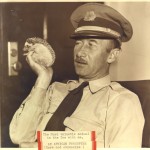 During the Great Depression, New York City Parks Commissioner Robert Moses embarked upon a wide-ranging overhaul of the NYC parks system that included the reconstruction of the Central Park Zoo and the construction of the Prospect Park Zoo. (Links lead to New York City Parks Department history pages.) Robert Moses first hired Captain Ronald Cheyne-Stout as an animal consultant for the two zoos, and later took him on as the zoos’ Menagerie Director. Continue reading
During the Great Depression, New York City Parks Commissioner Robert Moses embarked upon a wide-ranging overhaul of the NYC parks system that included the reconstruction of the Central Park Zoo and the construction of the Prospect Park Zoo. (Links lead to New York City Parks Department history pages.) Robert Moses first hired Captain Ronald Cheyne-Stout as an animal consultant for the two zoos, and later took him on as the zoos’ Menagerie Director. Continue reading
Author Archives: Leilani Dawson
Collections processing updates
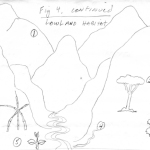 Over the past several months the WCS Archives has processed six collections, five of which are wholly or partially open for research. The finding aids for these collections have joined the descriptions of previously processed archival collections available through the WCS Library’s public website, www.wcs.org/library. (The direct link to the Archives’ finding aids is: http://ielc.libguides.com/wcs/archives_fas.) Included below are the abstracts for and links to the collections’ finding aids, plus an image or document from each. Continue reading
Over the past several months the WCS Archives has processed six collections, five of which are wholly or partially open for research. The finding aids for these collections have joined the descriptions of previously processed archival collections available through the WCS Library’s public website, www.wcs.org/library. (The direct link to the Archives’ finding aids is: http://ielc.libguides.com/wcs/archives_fas.) Included below are the abstracts for and links to the collections’ finding aids, plus an image or document from each. Continue reading
Working in the Wild
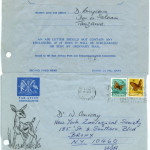 In the 1970s, the New York Zoological Society [NYZS] increased its efforts in international conservation, sponsoring external researchers and conservationists with projects that furthered the NYZS mission of protecting wildlife and wild places. NYZS-sponsored researchers conducted field work in countries far from home, often for several months at a time. Reporting back to the Society, they shared exciting scientific findings or provided updates on conservation efforts in regions including East Africa, Central America, and Southeast Asia. But amid the progress reports and publications full of data from the field, the correspondence from field researchers gives a sense of the physical and logistical difficulties of conducting international research. Continue reading
In the 1970s, the New York Zoological Society [NYZS] increased its efforts in international conservation, sponsoring external researchers and conservationists with projects that furthered the NYZS mission of protecting wildlife and wild places. NYZS-sponsored researchers conducted field work in countries far from home, often for several months at a time. Reporting back to the Society, they shared exciting scientific findings or provided updates on conservation efforts in regions including East Africa, Central America, and Southeast Asia. But amid the progress reports and publications full of data from the field, the correspondence from field researchers gives a sense of the physical and logistical difficulties of conducting international research. Continue reading
Forty-four years of Earth Day at the Wildlife Conservation Society
In early 1970, the United States’ new environmentalist movement conceived of the first-ever Earth Day, a day of action and awareness. New York City celebrated with an all-day rally at Union Square Park. Exhibitors at Union Square included groups focused on air, water, and noise pollution; urban public health issues such as pest control and lead poisoning; the conservation of wildlife and wild places; nuclear power, peace, and disarmament; population and food issues; and several other environmental and civic causes. (List of exhibitors , April 1970. William G. Conway records, circa 1900-2004 (bulk 1960-2003). Collection 1028.) Continue reading
‘The most wonderful of all living mammals’
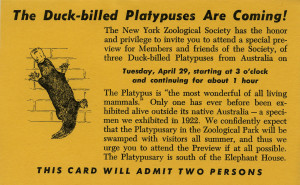 In 1922, the Bronx Zoo displayed the first duck-billed platypus to be shown live in a zoo outside of Australia. That was the last platypus to be seen in the United States for the next quarter century, until the Bronx Zoo again exhibited platypuses in April 1947. The Bronx Zoo’s parent organization, the New York Zoological Society, had begun working with the famed Australian naturalist David Fleay to acquire platypuses in the winter of 1945-1946. The original hope was to display the platypuses that summer, but several factors thwarted this plan. Capture and shipping difficulties, a threatened maritime strike, and a housing shortage that led the US government to ban all non-housing construction ultimately led the Society to call off the acquisition until the following year. Continue reading
In 1922, the Bronx Zoo displayed the first duck-billed platypus to be shown live in a zoo outside of Australia. That was the last platypus to be seen in the United States for the next quarter century, until the Bronx Zoo again exhibited platypuses in April 1947. The Bronx Zoo’s parent organization, the New York Zoological Society, had begun working with the famed Australian naturalist David Fleay to acquire platypuses in the winter of 1945-1946. The original hope was to display the platypuses that summer, but several factors thwarted this plan. Capture and shipping difficulties, a threatened maritime strike, and a housing shortage that led the US government to ban all non-housing construction ultimately led the Society to call off the acquisition until the following year. Continue reading
Panda-Mania in the Bronx
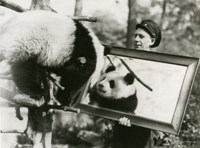 William Bridges, in his history of the early years of the New York Zoological Society, relates that “in 1901, William T. Hornaday, the Bronx Zoo’s founding director, sought to acquire a ‘particolored bear’ for exhibition” (Gathering of Animals, p.222). In 1938 Hornaday’s successor, W. Reid Blair, acquired the Society’s first giant panda, Pandora. Pandora–and to a lesser extent her compatriot, Pan–was a smashing success. Her sojourn at the Society’s pavilion at the 1939-1940 World’s Fair was so popular that her return to the Bronx was celebrated with an enlarged enclosure and increased visitor viewing areas. Continue reading
William Bridges, in his history of the early years of the New York Zoological Society, relates that “in 1901, William T. Hornaday, the Bronx Zoo’s founding director, sought to acquire a ‘particolored bear’ for exhibition” (Gathering of Animals, p.222). In 1938 Hornaday’s successor, W. Reid Blair, acquired the Society’s first giant panda, Pandora. Pandora–and to a lesser extent her compatriot, Pan–was a smashing success. Her sojourn at the Society’s pavilion at the 1939-1940 World’s Fair was so popular that her return to the Bronx was celebrated with an enlarged enclosure and increased visitor viewing areas. Continue reading

